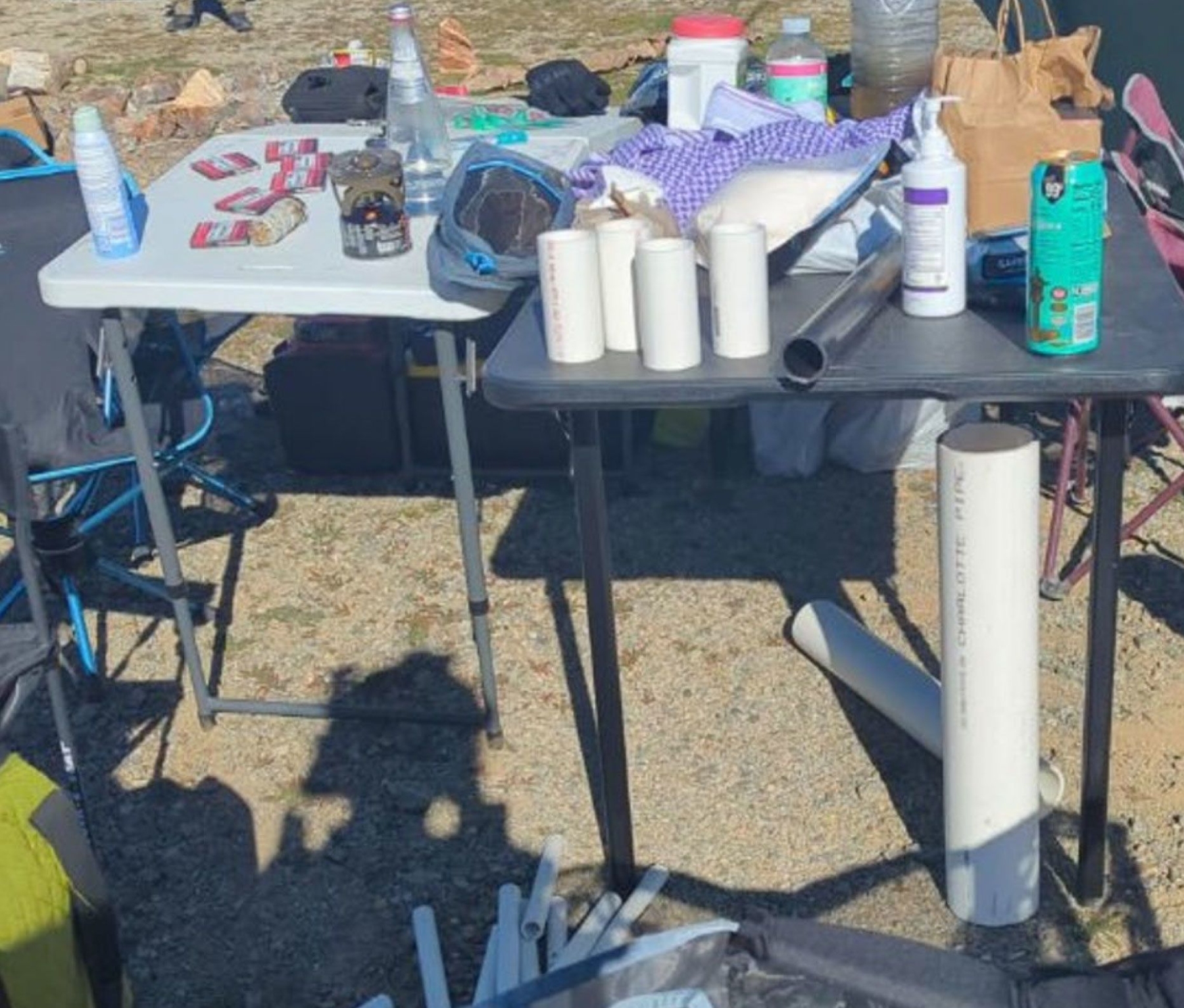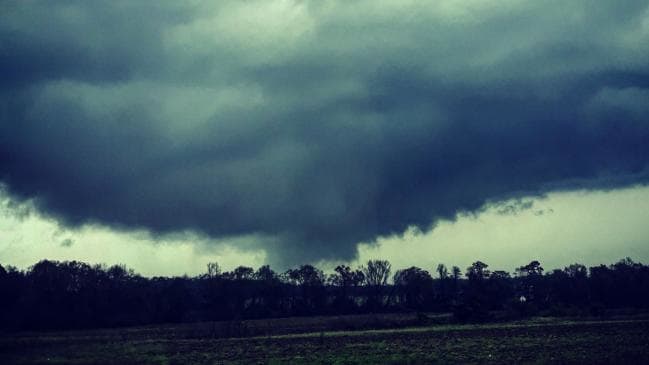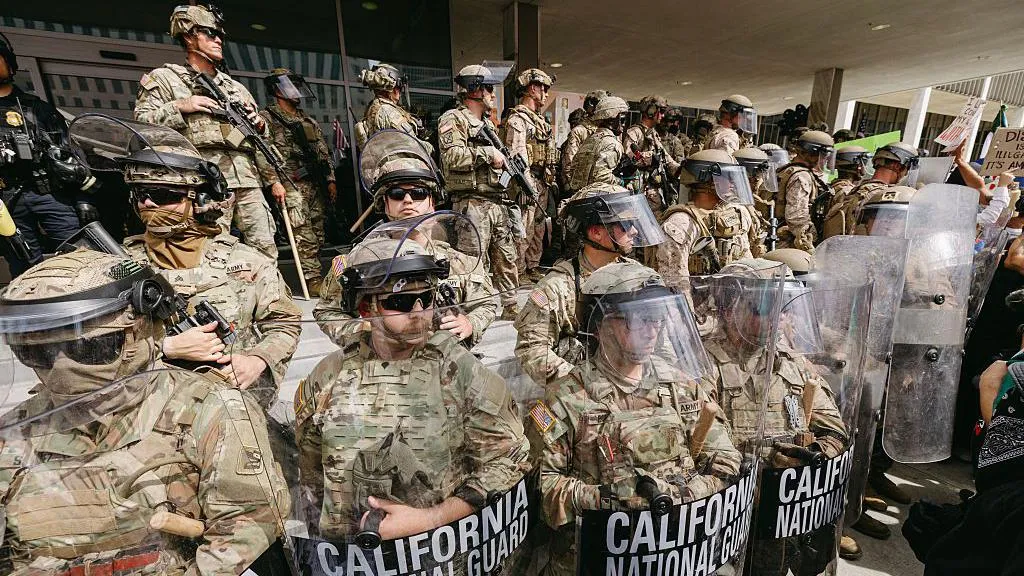
This article is more than
6 year oldTrump reacts to ‘monster’ tornadoes

Rescuers searched for victims on Monday amid homes smashed to their foundations, shredded metal dangling from trees and dead animals lying in the open after a tornado ripped through a rural Alabama community and killed at least 23 people, including children. Part of the severe storm system also unleashed other tornadoes around the Southeast of the United States.
“Unfortunately our toll, as far as fatalities, does stand at 23 at the current time,” Lee County Sheriff Jay Jones said of the death toll which is expected to rise as first responders search the area. He added that two people were in intensive care.
“The devastation is incredible,” he said.

Travelling straight down a county road, the twister carved a trail of destruction at least half a mile wide and about a mile long Sunday, overwhelming the Lee County coroner’s office, which was forced to call in help from the state.
“It looks like someone almost just took a giant knife and scraped the ground,” Mr Jones said.
US President Donald Trump tweeted an acknowledgment of the disaster on Sunday night.
To the great people of Alabama and surrounding areas: Please be careful and safe. Tornadoes and storms were truly violent and more could be coming. To the families and friends of the victims, and to the injured, God bless you all!
— Donald J. Trump (@realDonaldTrump) March 4, 2019
He promised immediate action from the Federal Emergency Management Agency.
“FEMA has been told directly by me to give the a-plus treatment to the great state of Alabama and the wonderful people who have been so devastated by the tornadoes,” he said.
“(Governor Kay Ivey), one of the best in our country, has been so informed. She is working closely with FEMA - and me.”
Monster tornado spotted Sunday in Warner Robins, Georgia as deadly winter storm brings severe weather to the South. https://t.co/SFvAVeU3Zh pic.twitter.com/71orzo92XS
— ABC News (@ABC) March 4, 2019
Drones flying overhead equipped with heat-seeking devices had scanned the area for survivors but the dangerous conditions halted the search late Sunday, Mr Jones said. An intense ground search resuming on Monday morning.
He told reporters that children were among the dead and that some people are still believed missing and that a search and rescue operation was ongoing in that community about 60 miles (95 kilometres) east of Montgomery, Alabama’s capital city.

“Unfortunately we believe that number is going to go up,” Mr Jones said of the fatalities.
He said single-family homes and mobile homes were destroyed.
He had told reporters earlier that several people were taken to hospitals, some with “very serious injuries.”
Dozens of emergency responders rushed to join search and rescue efforts in hard-hit Lee County after what forecasters said they think was a large tornado touched down on Sunday afternoon, unleashed by a powerful storm system that also slashed its way across parts of Georgia, South Carolina and Florida.

Radar and video evidence showed what looked like a large tornado crossing the area near Beauregard shortly after 2pm local time Sunday, said meteorologist Meredith Wyatt with the Birmingham, Alabama, office of the National Weather Service.
“It appears it stayed on the ground for at least a mile and maybe longer,” Mr Jones told AP.
After nightfall Sunday, the rain had stopped and pieces of metal debris and tree branches littered roadways in Beauregard.
Two sheriff’s vehicles blocked reporters and others from reaching the worst-hit area. Power appeared to be out in many places.

The US National Weather Service confirmed late Sunday a tornado with a track at least half a mile (.8 kilometres) wide caused the deadly destruction in Alabama. The tornado’s wind speeds were estimated to be between 254-331 kilometres per hour.
Rita Smith, spokeswoman for the Lee County Emergency Management Agency, said about 150 first responders had quickly jumped in to efforts to search the debris after the storm struck in Beauregard.
At least one trained canine could be seen with search crews as numerous ambulances and emergency vehicles, lights flashing, converged on the area.
Lee County Coroner Bill Harris said he expected the death toll to rise.

“We’ve still got people being pulled out of rubble,” Mr Harris told Al.com on Sunday evening. “We’re going to be here all night.”
Harris told the Associated Press that he called in help from the state, because there were more bodies than his four-person office can handle.
No deaths had been reported Sunday evening from storm-damaged Alabama counties outside Lee County, said Gregory Robinson, spokesman for the Alabama Emergency Management Agency.
But he said crews were still surveying damage in several counties in the southwestern part of the state.

Numerous tornado warnings were posted across parts of Alabama, Georgia, Florida and South Carolina on Sunday afternoon as the powerful storm system raced across the region.
Weather officials said they confirmed other tornadoes around the region by radar alone and would send teams out early Monday to assess those and other storms.
In rural Talbotton, Georgia, about 80 miles (130 kilometres) south of Atlanta, a handful of people were injured by either powerful straight-line winds or a tornado that destroyed several mobile homes and damaged other buildings, said Leigh Ann Erenheim, director of the Talbot County Emergency Management Agency.
Televised broadcast news footage showed smashed buildings with rooftops blown away, cars overturned and debris everywhere.

Trees all around had been snapped bare of branches.
“The last check I had was between six and eight injuries,” Erenheim said in a phone interview. “From what I understand it was minor injuries, though one fellow did say his leg might be broken.”
She said searches of damaged homes and structures had turned up no serious injuries or deaths there.
Henry Wilson of the Peach County Emergency Management Agency near Macon in central Georgia said a barn had been destroyed and trees and power poles had been snapped, leaving many in the area without power.
Authorities said a tornado was confirmed by radar in the Florida Panhandle late Sunday afternoon.

A portion of Interstate 10 on the Florida Panhandle was blocked in one direction for a time in Walton County in the aftermath, said Don Harrigan, a meteorologist for the National Weather Service in Tallahassee.
“There’s a squall line moving through the area,” Mr Harrigan told AP.
“And when you have a mature line of storms moving into an area where low level winds are very strong, you tend to have tornadoes developing.
It’s a favourable environment for tornadoes.”
The threat of severe weather continued into the late-night hours.
A tornado watch was in effect for much of eastern Georgia, including Athens, Augusta and Savannah.
The watch also covered a large area of South Carolina, including the cities of Charleston and Columbia.

Weather officials said they confirmed other tornadoes around the region by radar alone and would send teams out early Monday to assess those and other storms.
In rural Talbotton, Georgia, about 130 kilometres south of Atlanta, a handful of people were injured by either powerful straight-line winds or a tornado that destroyed several mobile homes and damaged other buildings, said Leigh Ann Erenheim, director of the Talbot County Emergency Management Agency. Televised broadcast news footage showed smashed buildings with rooftops blown away, cars overturned and debris everywhere. Trees all around had been snapped bare of branches.

“The last check I had was between six and eight injuries,” Ms Erenheim said in a phone interview. “From what I understand it was minor injuries, though one fellow did say his leg might be broken.” She said searches of damaged homes and structures had turned up no serious injuries or deaths there.
Henry Wilson of the Peach County Emergency Management Agency near Macon in central Georgia said a barn had been destroyed and trees and power poles had been snapped, leaving many in the area without power.
Authorities in southwest Georgia are searching door-to-door in darkened neighbourhoods after a possible tornado touched down in the rural city of Cairo, about 53 kilometres north of Tallahassee, Florida, on Sunday evening. There were no immediate reports of serious injuries.




